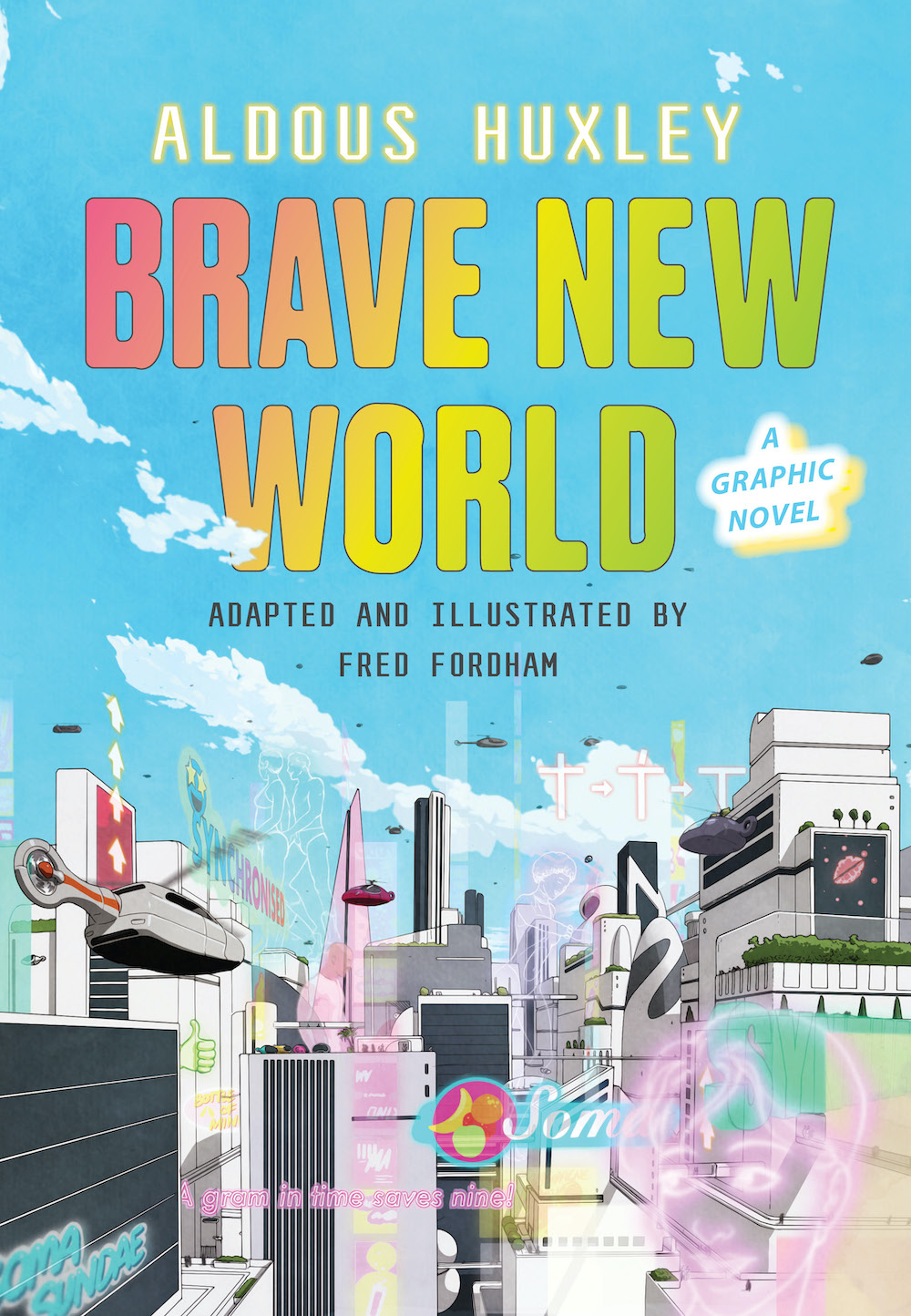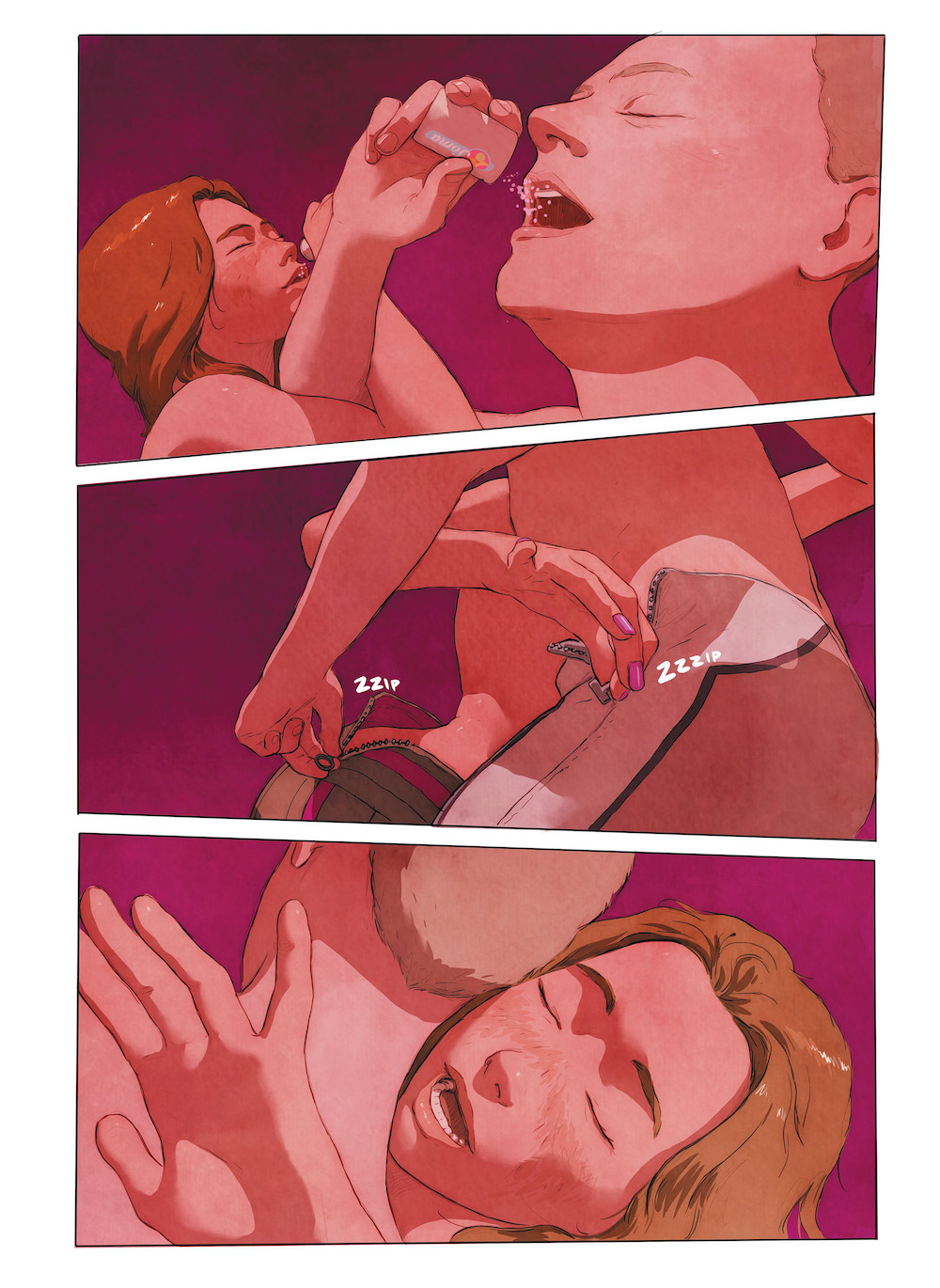Brave New World: A Graphic Novel
Adapted and Illustrated by Fred Fordham
234 pages
Harper Collins
Original Text © 1932, 1946 by Aldous Huxley
Oh wonder! How many goodly creatures are there here! How beauteous mankind is! Oh brave new world that has such people in’t!
—William Shakespeare, The Tempest
Almost a century after its initial publication in 1932, Aldous Huxley’s Brave New World has been solidified as a classic of dystopian science fiction (often bookended with its inverted mirror image, George Orwell’s 1984). In addition, it has now been wonderfully adapted and reframed as a graphic novel by Fred Fordham.
Among the most striking aspects of Huxley’s book are the author’s prescient, relentlessly chilling treatments of genetic engineering and psychological conditioning, and his brilliant evocation of a society built on the twin poles of “stability” and “promiscuity.” Both Fordham’s script (to a great extent a carefully edited version of the original text) and his restrained yet forceful visual style work to communicate these complexities. His judicious use of an extremely tight visual focus, a relentless intercutting between various narrative arcs of the unfolding plot, and the use of tonal overlays to force particular emotional responses in the viewer, also drive the complicated story.
Meanwhile, uninhibited indulgence in sex and SOMA mask the cultural losses that are the inevitable price of a stable existence. Love, family, religion, science, literature, risk and independent thought: all these are now gone, replaced by relentless consumption and pointless recreation: electro-magnetic golf and centrifugal bumble-puppy, extravagantly indulgent sensuality at plot-free feelie theatricals, and the empty spasmodic release of a drug-induced Orgy-Porgy or the faux spirituality of the weekly Community Sing.

Yet a few individuals among those blessed with the genetics and conditioning of the highest castes are able to intuit something of the machinery behind the façade. Hence the inevitable tragedies that unravel the lives of the alienated alpha, Bernard Marx, and the wide-eyed beta, Lenina Crowne. Likewise Bernard’s brilliant friend the erstwhile poet Helmholtz Watson; the twice-outcast John Savage and his scarred and forgotten mother; the socially-committed Hatcheries Director and the self-denying World Controller. No longer infinitely fungible cells within the social order, they have become the necessary sacrifices demanded by the system for its own perpetuation.
When the novel first appeared in 1932, Huxley’s utopia-gone-awry seemed to many left-wing reviewers to be archly elitist and inadequately anti-fascist, since it posited the inevitable triumph of mindless consumer capitalism, with class struggle replaced by a rigid neo-medieval caste system. Today, however, the situation is quite different. Globalized post-industrial capital seems poised to deliver exactly the kind of consumption that Huxley predicted. Meanwhile, endless iterations of self-realization therapy and the arrival of “micro-aggression” and psychedelic “micro-dosing” suggest that life devoid of every emotional hassle is indeed a real possibility.
In short, Brave New World remains troublesome today, perhaps even more pressing in its messaging and complex in its resonance than it was 90 years ago. It’s also a heck of a fun summer read. Very highly recommended

